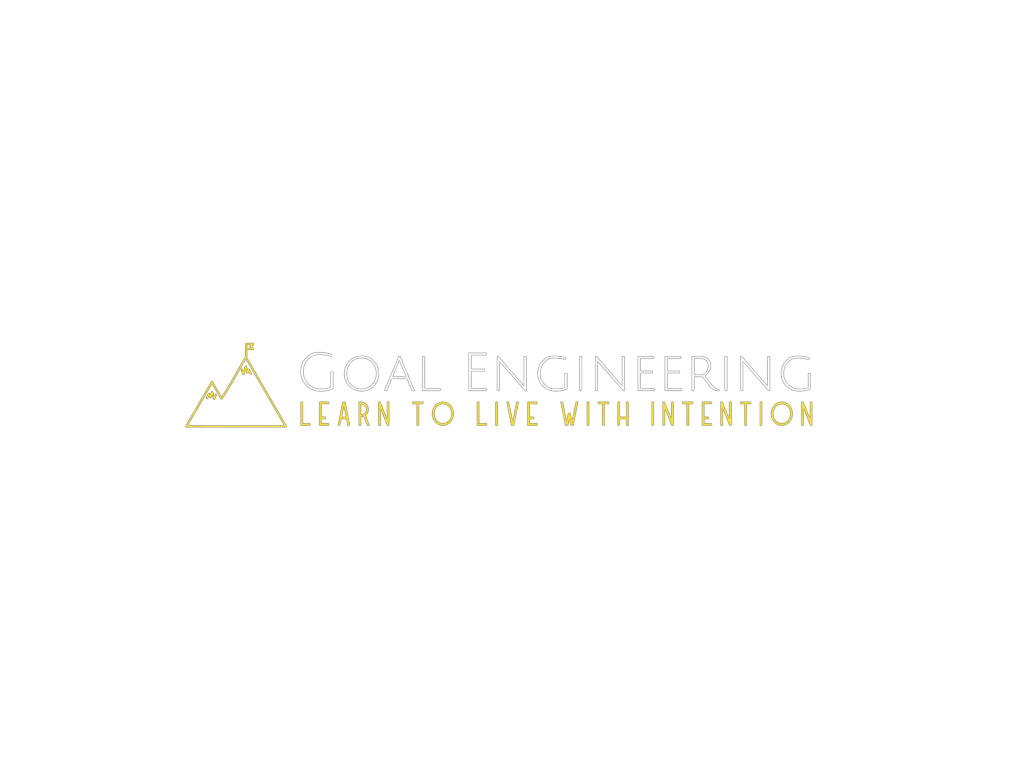If you’ve tried setting goals before you’ve almost certainly heard of SMART goals. The process of making your goals Specific, Measurable, Attainable, Realistic, and Time-bound might sound cool, but does it really work? Will you completely fail if your goals aren’t SMART?
Your goals don’t have to be SMART to be effective at changing your life. There isn’t much, if any, research that shows that the SMART system works. It’s over 40 years old and was made for managers, not individuals. It also overlooks priceless goal-setting tools like identity, vision, and mentoring.
Instead of setting SMART goals, you should simply identify the identity that you want to have. Then, define a clear vision of the type of life you want. And last, plan out the daily and weekly action steps that will get you there.
I’ve been doing it this way more or less since I started setting goals as a teenager. The SMART acronym hasn’t ever really been part of my goal-setting system and I’ve still been able to run a marathon, become a business owner, start a family, and much more.
I see people promoting it all the time and it bothers me because I don’t think any real people actually use SMART goals. Even while developing my 4-4-4 Goal-Setting System I’ve found ways to make my goals SMART without actually going through all five parts of the acronym!
SMART goals are one of those ideas that an executive comes up with in the boardroom thinking it’ll be the next big thing that will change their company. The reality is that ideas like that just aren’t practical in the real world. Nobody really uses them.
And honestly, I don’t know anybody that actually uses SMART goals! Do you?
The main problem with SMART goals is that it’s more of a checklist than an actual goal-setting process. It can be a good test to see if you’ve established a solid foundation on which you can achieve your goals. But it’s not necessary or efficient for accomplishing goals. I hope to debunk the myth of SMART goals here and give you the tools you should be using instead.
How SMART Goal-Setting Limits You
The SMART acronym stands for Specific, Measurable, Attainable, Realistic, and Time-bound. Or, at least, that’s what I was taught it stands for. I’ve since learned that there are dozens of ways to interpret the letters.
My least favorite part of SMART goals is that it keeps you from creating a vision and desired identity. In all my time studying goal-setting and after summarizing over 400 non-fiction books, I’ve learned how critical identity and vision are for successful goals and a successful life.
I’ve been setting and accomplishing goals for over 15 years and I’ve never really used the SMART system. It’s outdated, was made for managers, and is just… clunky.
I’ve been setting and accomplishing goals for over 15 years and I’ve never really used the SMART system. It’s outdated, was made for managers, and is just… clunky.
Identity
Research shows that smokers who try to change their identity to be that of a non-smoker are far more likely to quit smoking than if they just say “I’m trying to quit smoking.”
The same works for anything you want to do or become. I’m using this right now as part of my goal-setting system and I’m seeing some pretty dramatic results. Instead of just saying “I want to wake up early.” I’m beginning to identify myself as “an early riser.”
I remind myself of this desired identity all the time and suddenly it’s become a lot easier to get up early. I’ve done it every day this week so far as well as stuck to all my other goals! I’m also doing the same with becoming a good Dad, a runner, a blogger, and more.
I’ve been setting and accomplishing goals for over 15 years and I’ve never really used the SMART system. It’s outdated, was made for managers, and is just… clunky.
Vision
Science agrees that just like with identity, having a clear vision of where you want to go is linked to higher performance. I’ve used this one myself dozens of times to build the life I want and I’m still using it today.
Just in the last year I used the power of vision, along with a mighty goal-setting tool I’ll get to later, to get a house at a good price in a wildly competitive housing market. To give you an idea how bad it’s been, most people where I live were paying $30,000 or more over the asking price of a home just to compete. Most homes were selling within hours.
I knew all of this was going on, but we really wanted our own place. So, knowing that it had served me well in the past, I applied the power of vision. I imagined myself packing up our stuff and carrying each of those boxes into a new home. I’d do that a few times a week and worked hard to save money to make it happen.
Because I’m self-employed, we also had to wait to get a house, so we weren’t expecting what happened next. Our neighbors two doors down moved down the road next to some family, but they hadn’t sold their house yet. We asked about it initially but they said they were saving it for someone so we didn’t think about it again.
A few months later, though, our family members down the road mentioned the still unsold house to their new neighbors. They learned that the person our neighbors had been saving the house for had backed out and asked if we’d like to take a look at it.
A week later we walked through the house for the first time and were amazed at how perfectly it fit everything we needed. Our old neighbors were generous enough to let us put in an offer before it even went on market and they accepted! Oh and as for me working for myself, that resolved on its own too!
I’m now sitting in my first ever home, that we bought in the middle of the most competitive housing market our state has ever known, and in the middle of the COVID-19 pandemic, all because I had a vision that it was possible and worked hard to make it happen.
Neither this nor the power of vision happen when you use the SMART acronym. There’s nowhere in making your goals Specific, Measurable, Realistic, or Time-bound that harnesses the power of both. It can, however, be a good test to see if your action steps are effective! We’ll get to that in a minute, but first let’s talk about one more limitation of SMART goals.
SMART Goals Have No Perspective When You “Fail.”
Another major limitation with SMART goals is that they can make you feel like a failure. Say you’re specific about how much money you want to make next month and you come up short. According to SMART goals, you’ve failed to reach your goal. That’s more likely to make you feel terrible and quit your goal than motivate you to keep trying.
Plus, there’s a bigger picture of what happened that you’d miss if you were to only see it as “failure.”
As I’ve worked on many goals throughout the last 15 years I’ve discovered that there’s never really such a thing as “failure.” When you miss a target it’s simply a learning experience. You also grew closer to it than you were before. Working toward that goal gives you priceless data on how good the goal is for you and how good you are at going for that goal.
There are dozens of benefits of “failure,” but if you stick to SMART goals you’ll miss all of them.
Use SMART Goals to Set Effective Action Plans For Your Goals
When people set New Year’s resolutions in January, the most common one I see is something like “go running 3x per week” or some other form of exercising a certain number of days per week. The only problem is, that’s not a goal, it’s an action plan. It’s a good ambition to have, but on it’s own there’s no motivation or transformation.
What you really need to set effective goals is to first decide on the outcome you want and then figure out the action steps that will get you there. We’ve already talked about the outcome part when we went over vision and identity. Once those are clear, then it’s time to make a plan, like going running 3x per week, to get you there.
This is where SMART goals can help you. Not all of the outcomes you seek will even be able to be Specific, Measurable, Realistic, or Time-bound. You wouldn’t want to limit them by those standards anyway because it would keep you from reaching your full potential.
Action plans for your goals, on the other hand, can be Specific, Measurable, Realistic, and Time-bound. Even our example of running 3x per week is already all of those things!
So once you do figure out who you want to be and the vision of what you want your life to be like, set the right action steps with the SMART framework. If you go in the reverse order you’ll limit yourself, set plans instead of goals, and probably end up doing something you don’t really care about. That’ll only leave you uninspired and unmotivated, which is why you quit most of your goals.
In other words, over-focusing on SMART goals, and starting every goal with this system can lead to not accomplishing your goals at all.
If you use it to set up powerful action steps to lead you to your goals, then it’s helpful. But even then it leaves out a lot of powerful tools you can add to your goals to help you achieve them faster and enjoy the journey even more.
Powerful Goal-Setting Tools that SMART Goals Leaves Out
Shawn Achor’s The Happiness Advantage is a bestselling and life-changing book that flips conventional ideas about success upside down. And rightly so, because we’ve had it wrong for a long time and it’s making a lot of people miserable!
The main point of the book is that happiness gives you significant advantages in life that make you successful, not the other way around like most of us learned growing up. Achor also gives seven principles for improving happiness, one of which was so significant that he wrote a whole other book about it.
The only problem is, the mind-bending main idea of the book kind of overshadowed this gigantic personal growth principle.
Achor identifies that research shows that this one thing is a greater predictor of happiness, and also success, than anything else, with a massive statistical significance. That’s science-speak for “the correlation between this principle and happiness is huge.”
That one gigantic predictor of happiness, advantages in all aspects of life, and success beyond anything else, is social connection.
Some of those many advantages include a stronger immune system, less anxiety and stress, and a better ability to focus. But its real full potential is when you use it while working on your goals by getting a mentor.
When you have a mentor, you can take advantage of all of these benefits and then some. That might come in the form of a coach, accountability partner, or group of people working on the same goal as you. It might even be telling your goal to other people and asking for their support.
All of these major benefits, and what science says is the biggest benefit to your happiness and success, and it’s nowhere to be found in the SMART goal-setting system. That’s a pretty big deal. And an extremely good reason to ditch SMART goals altogether. But wait, there’s more!
SMART Doesn’t Harness the Power of Visualization
Visualization is when you imagine yourself going through the motions of something. It can be exercise, writing, waking up early and not hitting snooze, anything.
Exercise psychologist Guang Yue performed a study that shows how powerful it is. He compared strength gains between people who visualized exercise and those who actually worked out. Those who did the physical motions grew their strength by 53%, while those in the visualization group improved by 35%.
That’s over half of the gains, just by running through the motions in your mind!
If you want to reach your goals, you must visualize not just the outcome, but the process. Doing this gives you many of the gains of doing the actual work. But it also makes you more likely to do the work itself.
Just the other day I was having a really hard time getting going. I’d been through a rough patch recently and couldn’t shake it. I didn’t want to work, but I knew that meditation and visualization would help.
I went into my backyard, plugged in my headphones, and spent 15 minutes or so just visualizing various things, including me going through the process of writing an article I’d been procrastinating.
It was like lighting a fire inside of me that finally got me out of the rut and right back into my work routine. That day I wrote almost 2,000 words!
Everything changed simply because I harnessed the power of visualization.
With such a powerful tool like this, you’d think it would be in the SMART system. But nope, nowhere in this acronym and way of setting goals does it have you utilize the power of visualization.
Where to Go From Here
There are dozens of ways to boost your ability to set powerful goals and achieve them. When you think only in terms of SMART goals, you miss most of these. And a better chance that you’ll actually accomplish your goals.
I’ve been setting and accomplishing goals for over 15 years and I’ve never really used the SMART system. It’s outdated, was made for managers, and is just… clunky.
All of my successes have simply come from getting a vision of who I wanted to become and what I wanted my life to look like then planning out what action steps would get me there. I’ve utilized the power of social connections and visualization and many other goal-setting tools that actually work.
I can say with confidence that just these few principles are far superior to SMART goals. Your goals don’t need to be SMART to be effective, you just need a vision, desired identity, and a plan to get there!





